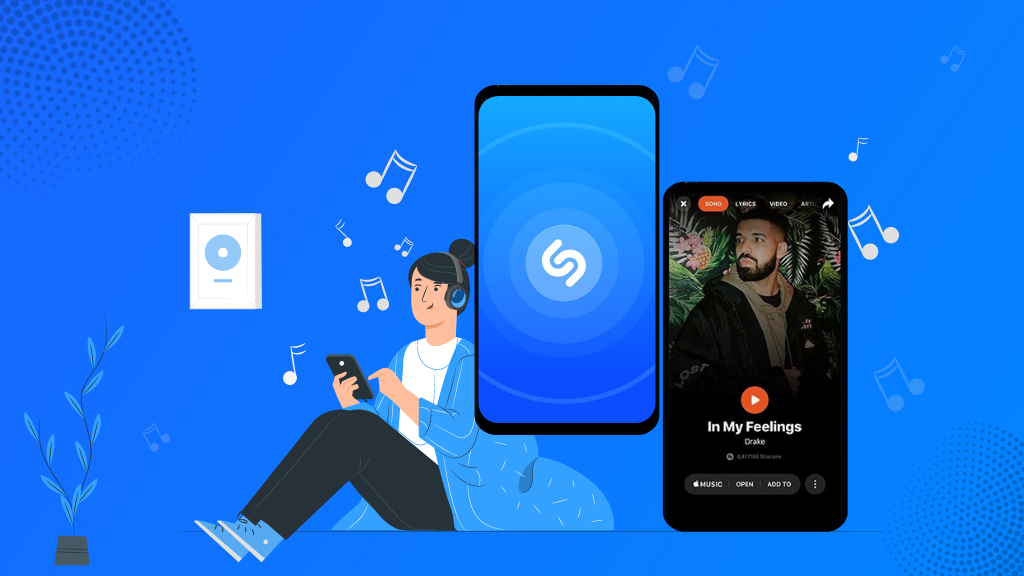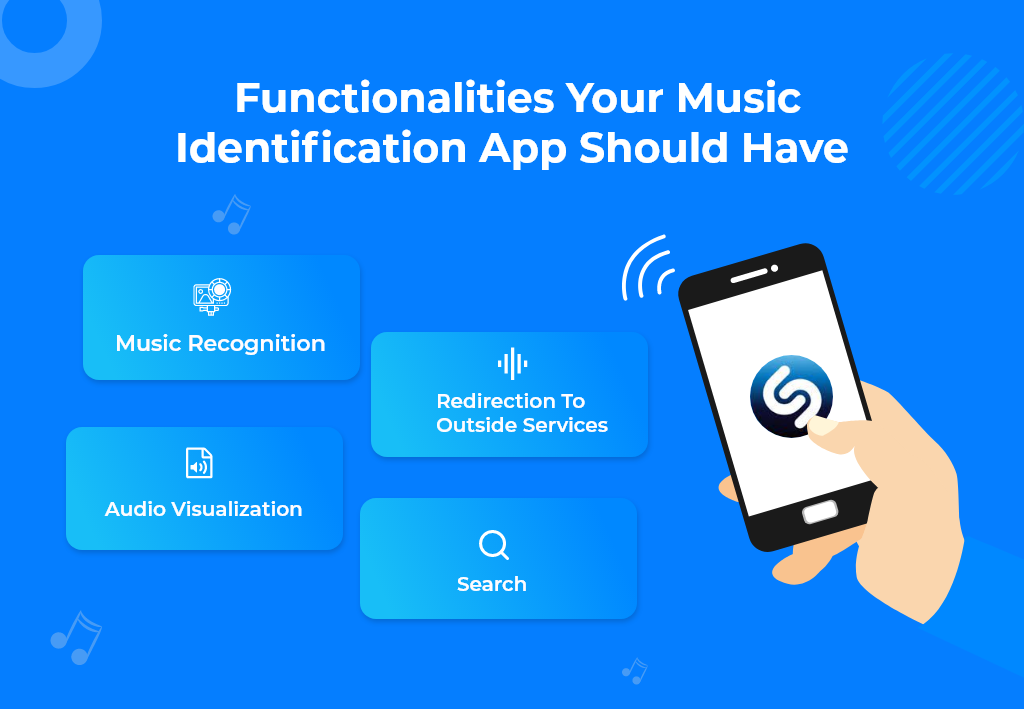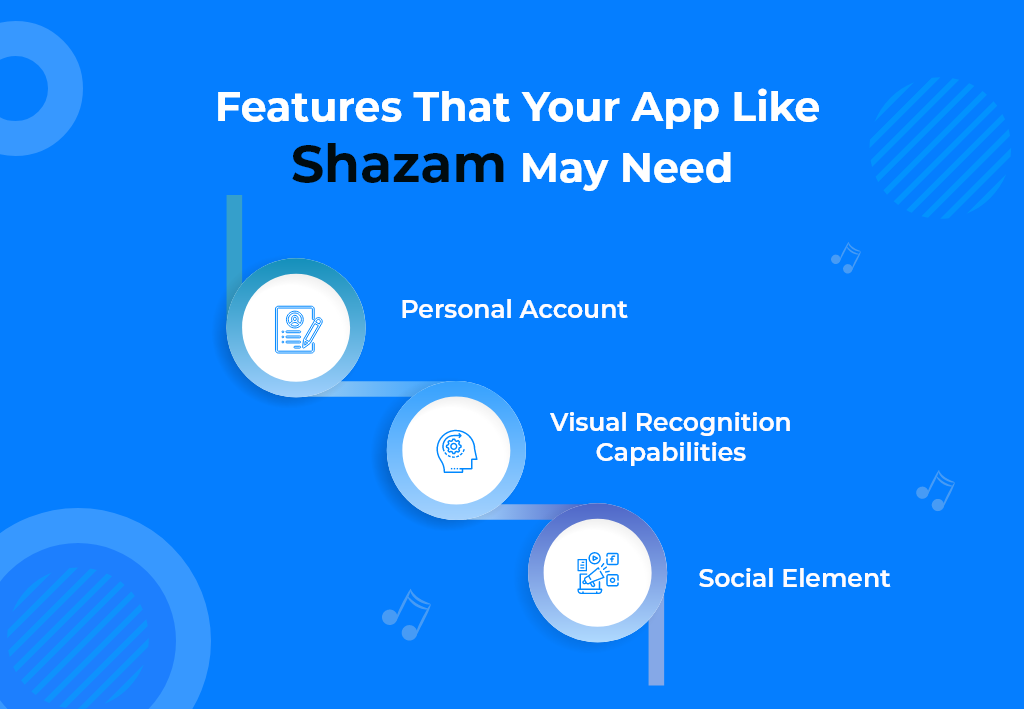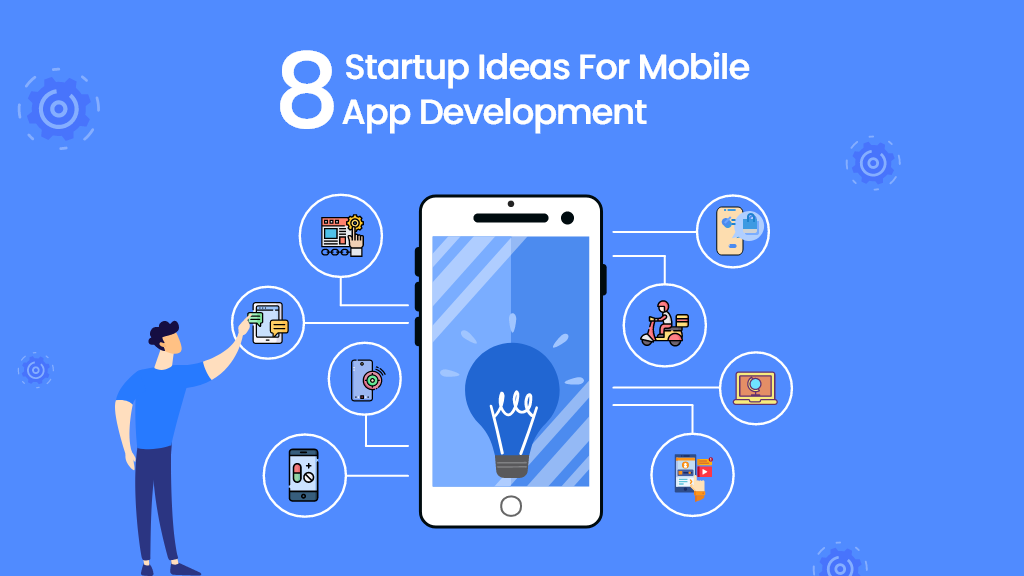Don't miss the chance to work with top 1% of developers.
Sign Up Now and Get FREE CTO-level Consultation.
Confused about your business model?
Request a FREE Business Plan.
Learn How to Make a Music Identification App Like Shazam
Table of contents

Can you recall the times when you used to hum the half-remembered songs and ask your friends to recognize them? Or the moments when you google the lyrics to find out the name of the song? Or maybe you still google them? If you do, you must know about Shazam.
Wouldn’t it be great if you could identify any song you hear? Well, Chris Barton and his co-founders have made this possible for everyone who has some lyrics or music stuck in their head but don’t know the song.
The idea to develop an app that can identify music (an app like Shazam) was not brand new. Before Shazam, many companies were trying to implement this idea but their approach was not as efficient as Shazam. They limited their song identification ability to a certain number of radio stations. As a result, users had to enter the exact time they heard a song and the radio station’s name to identify it.
Shazam was launched in 2002 and it was known as a 2580 service. Now, you might be wondering what is this 2580? It is the phone number that people used to dial to get their music recognized. The call lasts 30 seconds after which the user receives an SMS with the song and artist name. After the launch of Google Play Store and Apple Store, the Shazam app was available for mobiles and catered to many users worldwide.
This blog will help you learn about the magic (business plan and model) behind Shazam and what it takes to develop an app like Shazam.
What is the Magic Behind Shazam?
Shazam works even in crowded places. The music discovery app is lightning fast, incredibly precise, and can recognise any music you can think of. Let’s go right to the point. This app identifies a song by focusing on the three fundamentals of music: amplitude, frequency, and time.
Each song contains an audio fingerprint that is based on a spectrogram – a time-frequency graph. Spectrograms are broken down into many bits, which are referred to as fingerprints. Shazam collects a sample of the audio being played using the device’s built-in microphone. It then compares the fingerprints of the audio to its library of over 11 million songs, with new songs being added every day.
Lyrics are Not Enough
When you initially start to wonder how an app like Shazam operates, it appears to be fairly simple: you listen to the music, match it to a database, and then you receive your response. It’s a little more complex than that, though.
We know that these song-identifiers assess each song using an audio fingerprint; let’s learn more about this technique.
Fingerprint of a Song
Every track has its unique fingerprint, just as the modern gadgets that employ fingerprint technology for protection. When we use an app like Shazam to search for a song, it records the audio and attempts to detect the fingerprint of the music. For doing so, it then compares the detected fingerprint to its database.
The search for a song in a database of millions of audio recordings is tough for these applications due to several issues. Background sounds and microphone distortions are the most common causes of delays and inaccurate matching. A 3D chart or a spectrogram, which represents a shift in frequencies over time, may be used to see the minutiae of an audio fingerprint. The colour of intensity in the spectrogram represents the loudness of the sound.
By examining the frequency, humans can distinguish between various sounds. An app like Shazam, for example, can’t distinguish a sound unless it’s at a specific frequency. Apps like Shazam extract the highest-energy information from an audio sample, referred to as peaks. The fingerprints with these high peaks that arose within a certain amount of time are matched to those in the database. Your search result is then given with the matched fingerprint.
This method of matching the peaks of an audio fingerprint to their database allows them to remove the majority of the undesired elements of an audio clip search, such as background noise and device distortions. Taking just the count’s peaks reduces the print size, allowing Shazam to show you one or more matches from a massive database in a fraction of a second.

How Should Your App Like Shazam Work?
Many people still think about how the Shazam app or any music identification app works, even in crowded places. Its trick is to focus on three elements of music: amplitude, frequency, and time while disregarding practically everything else in the song.
As a result, each song has its spectrogram, which is broken into several little parts known as fingerprints. There are almost 11 million songs in the Shazam database, and new songs are added every day. The song recognition process in Shazam is:
- It starts with the user recording a song.
- Next, the app generates a spectrogram out of it.
- In this step, the app looks for matches in the database.
- Finally, the results are displayed on the screen.
Looks simple right? Well, in reality, it isn’t.
Take a look at the features of the Shazam app, for example, and decide which ones you want to incorporate in your music identification app like Shazam. However, keep in mind that design is quite crucial in these types of mobile apps. It is one of the motivating elements for consumers to download and use your product.
Some Functions Your App Like Shazam Must Have
The functionalities included in a mobile app determine how the app will function in the marketplace. Every function should be implemented very carefully as these are the main points of attraction for users. Some of the excellent functions your app like Shazam must have are:

1. Music Recognition
The feature of Tap to Shazam is well-known in the marketplace. The app also took care if a user wants to know the previously searched songs by creating a menu called My Tags. Let’s take a deep look at several functions that your app should be able to do:
- Playing the tune to make sure what the user is exactly searching for.
- Displaying lyrics for the user to sing along.
- Sharing YouTube link of the song.
- Giving the option to purchase the track and keep it downloaded for a certain period.
2. Audio Visualization
Your app like Shazam needs a recognised display to show that the program is capturing and processing the song being played. Everyone is familiar with Shazam’s whirling and chattering sphere, but we recommend adding a dash of levity to audio visualisation.
3. Redirection to Other Services
Nowadays, it’s difficult to find an app that isn’t linked to social media. Social media buttons for Twitter and Facebook are a must-have. As a result, users may:
- Share songs that reflect their current mood,
- Keep track of what their friends are listening to,
- Add tunes to Tags, listen to them, and buy them.
Furthermore, connecting to other services increases the visibility of your application.
4. Search
It should go without saying that you should allow your users to search for music, artists, videos, and albums. Now, let’s look at how you may improve your music identification app. We’ve included some features below that you can add later.
Functions Your Music Identification App Would Require in the Future
Here are some features that you may include in your app like Shazam in the future:

1) Personal Account
Those who use Shazam regularly may have noticed that the app’s UI has been refreshed and several new features have been introduced. Developers seek to make their apps more customised, so users can now sign up for your app to keep the tags from getting mixed up with others (friends, family members, and so on.)
2) Visual Recognition Capabilities
A few years ago, Shazam introduced the visual recognition feature in their app. This allowed users to scan print ads, QR codes, and more to access AR content. You should also implement visual recognition in your app like Shazam.
If you wish to go beyond advertising, you may utilise this function to allow your users to search for things they saw in movies or shows, as TheTake does, or other items such as labels, artwork, billboards, and so on.
The photo/video identification technique is based on fingerprinting as well, but there needs to be a large library of screens and images.
3) Social Element
Social element screams outstanding newsfeed. Users may now learn about the tastes of famous musicians in addition to seeing what their Facebook pals are listening to. As a result, Shazam brings fans closer to their favourite singers. Furthermore, by broadcasting latest news and videos, the enhanced newsfeed allows viewers to keep up with the newest happenings in TV and music.
Shazam’s socialising program includes a verified account. So, if your app has gotten so successful that it attracts well-known musicians to create accounts on it, you’ll need to submit them to the verification process.
You may compile the most recent information on the most popular tunes listened to throughout the world and show them as toppers. Alternatively, just marking these top songs on a map will suffice. On Shazam, these functionalities are known as Pulse and Explore, respectively. The first shows users the most popular Shazams in real-time, while the second shows the most requested tunes on a map.
How Much Does it Cost to Make an App Like Shazam?
Some software developers and businesses have already attempted to profit from Shazam’s revenue opportunities. SoundHound (Midomi), Amazon’s Firefly, Bing Music, Sony’s TrackID, and Musipedia are all apps that are comparable to Shazam. Surely, other projects are standing in line to find out how much an app like Shazam costs.
The factors that affect the development of an app like Shazam are:
- Features and functionalities to include
- The complexity of the functionalities
- Technology stack implemented like machine learning, IoT, etc.
- Designs, etc.
Backend, design, native platforms, online application, and testing are the main cost components for creating an app similar to Shazam. To progress quicker with greater resources, you might engage a mobile app development team where jobs will be given to teams based on their competence. Hence, the total result is likely to be better.
At a median developer rate of $50, a single platform software like Shazam would cost around $115,000 – 120,000 to build. Custom or extra features, as well as a more expensive agency, will certainly boost it. Depending on the same parameters, a music app for both Android and iOS would cost $235,000 or more.
Conclusion
Making an app like Shazam isn’t as difficult as you would assume. One can easily design their music identification app with proper preparation and the correct mobile app development partner. You can see that, like any other successful app, Shazam’s success is based on synergy of efficient coding and careful planning.
You may experiment with new features, subscription models, and methods. Remember that market research will aid you in determining the fundamentals of the market, as well as what people are thinking about, what they want from a new song-identifier app, and your competition.

Rate this article!
Join 60,000+ Subscribers
Get the weekly updates on the newest brand stories, business models and technology right in your inbox.

Lively and spirited. You may call me a tech-geek. I like to explore latest advancements in the technical areas and develop case studies. Being a computer science graduate, I like to traverse through the technical platforms as well. You can find me understanding or playing with the latest technology.

Telemedicine 2.0 - A Comprehensive Guide On What Healthcare Providers Need To Know?
Discover how the latest advancements like Artificial Intelligence in telemedicine are reshaping patient care. This comprehensive resource offers insights into the key trends and innovations driving this shift, providing valuable knowledge for healthcare professionals looking to stay ahead.
Download Now!Take the First Step
Towards Success!
Master app development with a
30-day FREE trial of our premium
solutions.


















